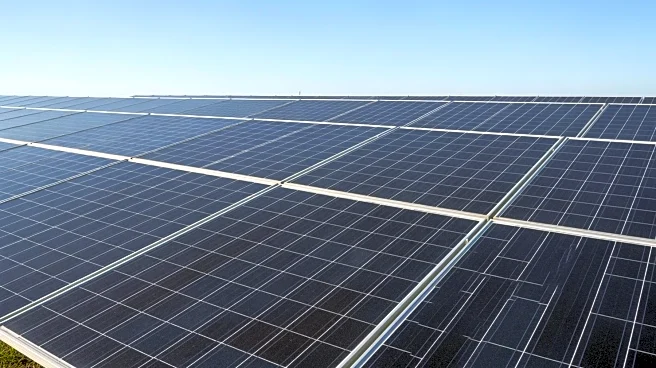What's Happening?
A new hydrogen production plant has been launched in Wensickendorf, Brandenburg, by ENERTRAG, a renewable energy company. The facility is set to produce green hydrogen using solar and wind energy, with
an electrolysis capacity of 4 MW. Starting in 2026, the plant will generate up to 380 tonnes of green hydrogen annually, with 230 tonnes allocated to the Heidekrautbahn railway line between Barnim and Berlin. This initiative is part of a joint project involving several partners, including Niederbarnimer Eisenbahn and the German Aerospace Centre, aimed at establishing a climate-friendly value chain for green hydrogen in the transportation sector. The project is supported by the Federal Ministry of Transport with funding of approximately 25 million euros ($29.2 million) under the National Innovation Programme for Hydrogen and Fuel Cell Technology.
Why It's Important?
The development of the hydrogen plant represents a significant step towards sustainable transportation solutions, particularly in rail transport. By providing a CO2-free alternative to fossil fuels, the project supports the broader energy transition and climate protection goals. It highlights the potential for green hydrogen to facilitate environmentally friendly mobility, reducing carbon emissions in the transportation sector. The initiative also underscores the importance of regional cooperation between industry, science, and politics in advancing innovative energy solutions. This project could serve as a model for similar initiatives worldwide, promoting the adoption of green hydrogen in various transportation applications.
What's Next?
The hydrogen plant is expected to begin operations in 2026, with ongoing scientific support from the Brandenburg University of Technology Cottbus-Senftenberg and the German Aerospace Centre. The project aligns with the Barnim district's zero-emission strategy, which has focused on renewable energy since 2008. As the plant becomes operational, stakeholders will likely monitor its impact on regional mobility and carbon emissions. The success of this project could encourage further investment in green hydrogen infrastructure, potentially influencing transportation policies and energy strategies across Europe and beyond.
Beyond the Headlines
The hydrogen plant initiative not only addresses environmental concerns but also contributes to regional economic development by creating a local value chain for green hydrogen. It exemplifies how renewable energy projects can drive innovation and sustainability, fostering collaboration across sectors. The project may also inspire similar efforts in other regions, highlighting the role of green hydrogen in achieving climate goals and enhancing energy security.













